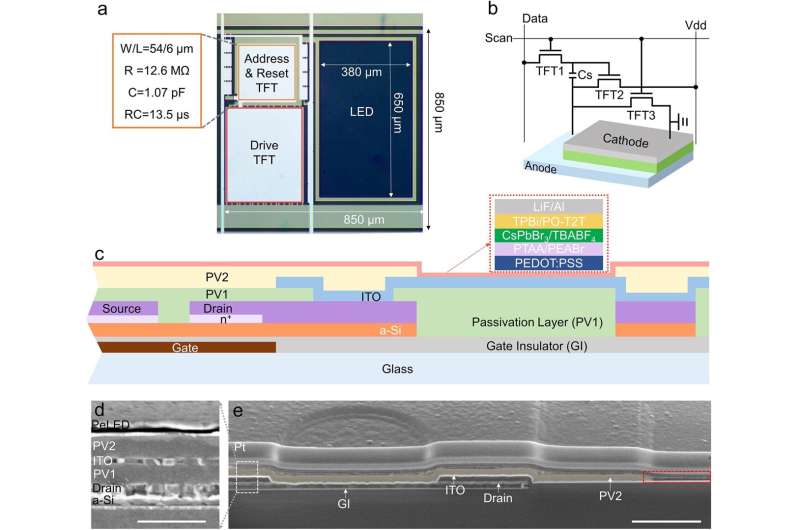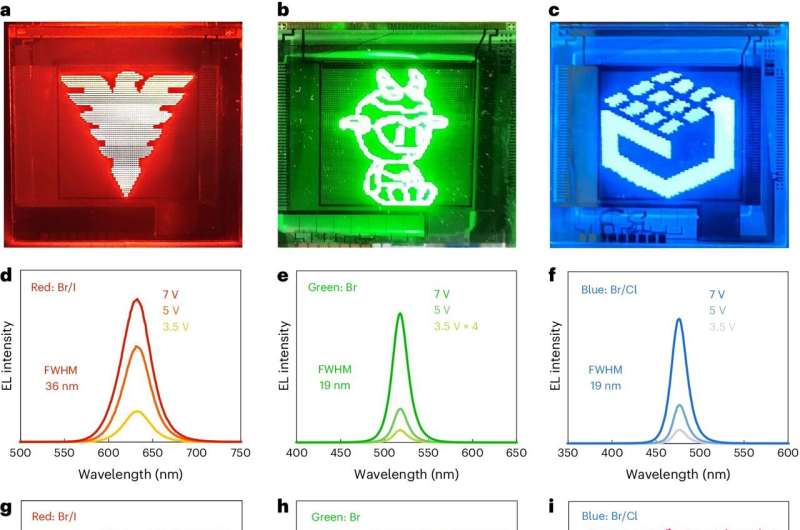July 2, 2024 report
This article has been reviewed according to Science X's editorial process and policies. Editors have highlighted the following attributes while ensuring the content's credibility:
fact-checked
peer-reviewed publication
trusted source
proofread
Researchers demonstrate second-generation digital display with perovskite light-emitting diodes

A team of microelectronic engineers affiliated with several institutions in China, working with a colleague from Sweden, has demonstrated a second-generation digital display screen that uses perovskite light-emitting diodes instead of standard LED technology.
In their study, published in the journal Nature Electronics, the group made improvements to the device and demonstrated its sensing capability.
In April, a research team with some of the same members demonstrated a digital display screen using LEDs made out of perovskite instead of semiconductor compounds such as gallium, arsenide or indium gallium nitride. They also showed that such screens could be used as sensing devices.
For this new study, the researchers also built a digital display device using perovskite light-emitting diode (PeLED) technology—this one with double the pixel resolution.
Current materials used to make LEDs have attributes including a high degree of acuity and sharpness. But the technology had limitations, such as an inability to serve as a sensor—other components have been used to fill the gap.
To overcome that limitation, researchers have been looking at perovskite, because in addition to emitting light, it can also absorb it, allowing it to be used as a sensing device. If a phone had PeLEDs, the screen would be able to sense touch, a fingerprint or even ambient light, mitigating the need for other components.

The new screen demonstrated by the research team had a 90 ppi density—a far cry from the densities of current smartphone screens, but a step toward equivalence. It also demonstrated a host of sensing abilities. The researchers believe such displays will also have much longer lifecycles and use less energy.
On the downside, researchers have had to contend with stability—exposing PeLEDs to oxygen or moisture leads to degradation, an issue that will have to be solved before such technology could be used in commercial devices.
More information: Yun Gao et al, Microsecond-response perovskite light-emitting diodes for active-matrix displays, Nature Electronics (2024). DOI: 10.1038/s41928-024-01181-5
© 2024 Science X Network




















